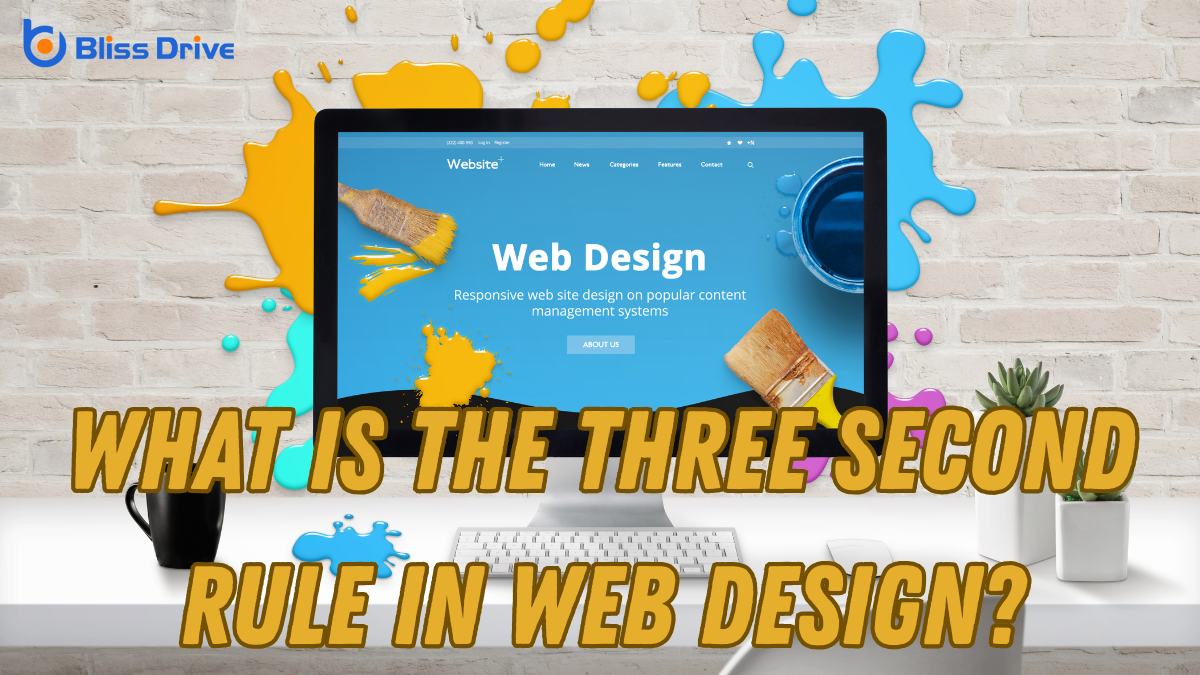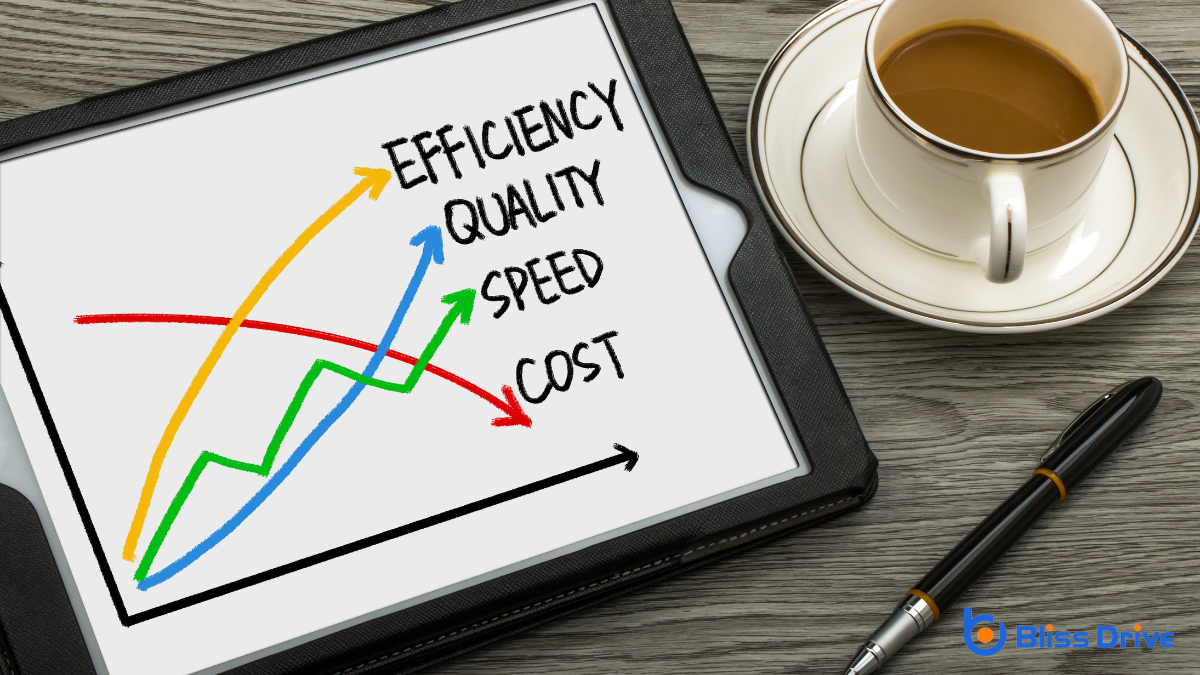Digital Marketing Services
Learn More About Us

Let's explore the Three Second Rule in web design, an essential concept that underscores the importance of capturing user interest swiftly. This rule suggests that we have just three seconds to make a memorable impressionWhen an ad is displayed on a user’s screen. and keep visitors engaged. Why does this brief window matter so much, and how can we optimize our websites to meet this challenge? By examining these questions, we can access effective strategies for improving user experience.
In today’s fast-paced digital world, the three second rule in web design is important for capturing user attention. We often hear that first impressions matter, and on the web, they occur in mere seconds.
The three second rule suggests that websites need to load and display engaging content quickly, or risk losing visitors. It’s essential for us to design interfaces that are intuitive and visually appealing within this brief timeframe.
By doing so, we increase the chances of users staying longer and exploring further. We should prioritize streamlined navigation, compelling visuals, and concise messaging.
Let’s remember, a slow-loading page or confusing layout can deter users, making it critical to respect this brief window to make a lasting impact.

Although our digital consumption habits evolve rapidly, our brains still process information in ways shaped by evolutionary history. Our ancestors needed to quickly assess their environments for survival, and that instinct persists today. We scan websites, seeking relevant information almost instantly. This is why the three-second rule in web design becomes essential; it aligns with our innate desire to make snap judgments.
Cognitive overload happens when we're bombarded with too much information. Our attention spans are limited, and distractions are abundant. We need to capture interest swiftly, or users will bounce to the next option.
Crafting a website that captures attention immediately hinges on the power of first impressions. We've just a few seconds to engage users, and those seconds are vital.
When visitors land on a site, they instantly form opinions based on visual appeal, layout, and initial content. A polished, professional appearance can establish trust and credibility right away. If a site looks outdated or cluttered, users might leave before exploring further.
It's essential for us to understand that first impressions affect user decisions. By creating an inviting and intuitive design, we encourage visitors to stay and interact.
We should aim for a seamless blend of aesthetics and functionality to leave a lasting impact. Prioritizing first impressions in web design sets the stage for a positive user experience.
What makes a website instantly engaging? We need to focus on key elements that grab attention right from the start.
First, clear and compelling headlines draw users in by succinctly conveying the core message. We should choose strong visuals, as striking images or graphics can create an emotional connection. Consistent brandingThe process of creating a unique name, design, and image for a product or service in the consumer's ... reassures visitors, making them feel familiar and encouraged to explore further.
Next, intuitive navigation allows users to find information quickly without frustration. Simplifying the layout helps users focus on the content rather than getting lost in clutter.
Don't forget a strong call-to-action; it guides users on what to do next, whether it's signing up or learning more. By integrating these elements, we can create a web experience that engages users instantly.

When designing for speed and efficiency, we need to prioritize optimizing load times and guaranteeing seamless user interactions. Our goal is to make sure that our website feels responsive and intuitive.
We can achieve this by minimizing file sizes, using efficient coding practices, and leveraging browser caching. By compressing images and files, we reduce the amount of data transferred, which speeds up load times. Additionally, clean code not only improves performance but also makes maintenance easier.
Let’s focus on reducing unnecessary elements and scripts that could slow down the site. Every second matters in retaining user attention.
We should also consider using Content Delivery Networks (CDNs) to distribute content closer to users. These strategies guarantee that our website runs smoothly, providing an efficient and satisfying user experience.
While focusing on our site's functionality, we shouldn't overlook the importance of visual appeal in web design. Aesthetic elements play a vital role in capturing our visitors' attention and making their experience enjoyable.
We can start by choosing a cohesive color scheme that reflects our brand identityThe visible elements of a brand, such as color, design, and logo, that identify and distinguish the ... and evokes the desired emotional response. Consistent typography also contributes to readability and the overall look of our pages.
Let's not forget the power of high-quality images and graphics. They can convey messages quickly and enhance user engagementThe interactions that users have with a brand’s content on social media..
Additionally, strategic use of white space helps guide users' eyes and prevents overwhelming them with information. By balancing visuals and functionality, we create a welcoming and intuitive environment that keeps users interested beyond those significant first three seconds.
Creating engaging content is essential for capturing users' attention and ensuring they stay on our site beyond those initial seconds.
We need to craft messages that resonate instantly, speaking directly to our audience's needs and interests. Short, powerful sentences and compelling headlines can make a difference.
Let's use clear, concise language that’s easy to digest. We must also incorporate visuals that complement our text, creating a cohesive story.
By focusing on the value we provide, we can form a connection with our audience. This means understanding what they’re seeking and addressing it promptly.
Our content should spark curiosity and drive the desire to explore more. Remember, our goal is to keep users engaged and enthusiastic to uncover what we offerThe specific product or service being promoted by affiliates..

To keep our websites within the vital three-second load time, we can harness technology by optimizing image formats, implementing lazy loading, and utilizing content delivery networks.
By converting images to formats like WebP, we guarantee faster load times without sacrificing quality.
Let's also consider lazy loading and CDNs to efficiently manage resources and deliver content swiftly to our users.
The choice of image formats plays a vital role in optimizing website load times. When we select the right formats, we guarantee our images load quickly, enhancing user experience.
Common formats like JPEG and PNG serve different purposes; JPEGs work well for photos with many colors, while PNGs are ideal for images needing transparency.
However, newer formats like WebP and AVIF offer better compression, maintaining quality while reducing file size. By using these, we can considerably speed up our sites.
It's essential to analyze our site's needs and choose the best format for each image. Let's remember, every second counts. By optimizing image formats, we not only meet the three-second rule but also keep our visitors engaged and satisfied.
While optimizing our image formats is essential, embracing lazy loading is another powerful strategy to enhance load times.
By delaying the loading of non-essential images and content until they're needed, we can improve our site's performance and user experience. Imagine the relief as our pages load faster, allowing visitors to engage with our content without delay.
Lazy loading helps us achieve:
Let's harness lazy loading to meet the three-second rule, ensuring our audience stays engaged and satisfied.
When it comes to speeding up our website, leveraging Content Delivery Networks (CDNs) can be a game-changer.
CDNs work by distributing our website's content across multiple servers worldwide, bringing data closer to users regardless of their location. This proximity reduces latency, ensuring faster load times for everyone accessing our site.
Understanding how users interact with a website can be essential for improving its design and functionality. By analyzing user behavior and feedback, we gain insights that guide us toward creating a more engaging and efficient user experience.
Let’s consider the emotions and motivations of our audience:
To achieve long-term success in web design, we must commit to continuous optimization, ensuring our sites evolve alongside user needs and technological advancements. This requires us to regularly assess performance metricsKey indicators used to measure the effectiveness of affiliate marketing efforts, such as clicks, con..., analyze user feedback, and stay updated with the latest design trends and technologies.
By doing so, we can identify areas for improvement and implement changes that enhance user experience and engagement. We shouldn't shy away from testing new features or redesigns, as this experimentation can leadA potential customer referred by an affiliate who has shown interest in the product or service but h... to valuable insights.
Our goal is to create a dynamic online presence that adapts and grows over time. Let's embrace a proactive approach, making incremental adjustments rather than waiting for major overhauls. This strategy helps us meet the ever-evolving expectations of our users effectively.
In summary, we must prioritize the three-second rule in our web design efforts to guarantee we're capturing and retaining user interest. By focusing on quick load times, intuitive design, and compelling content, we can make a strong first impression. Let's leverage technology and continuously analyze user behavior to refine our approach. This ongoing optimization is vital for maintaining user engagement and satisfaction, ultimately leading to long-term success in the digital landscape.
